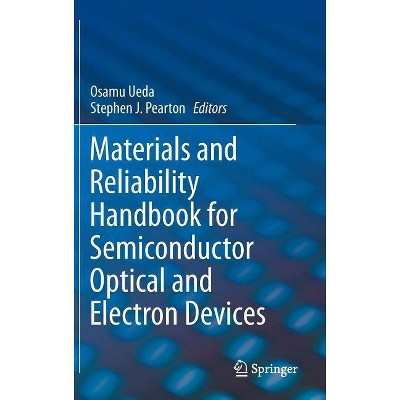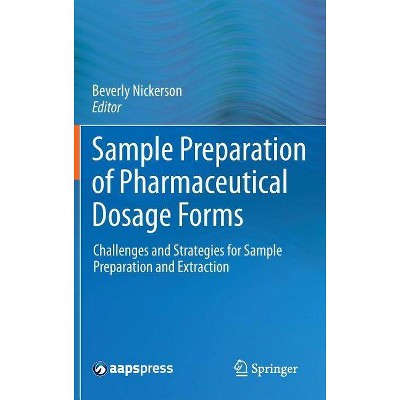Handbook of Sample Preparation for Scanning Electron Microscopy and X-Ray Microanalysis - by Patrick Echlin (Hardcover)

Similar Products
Products of same category from the store
AllProduct info
<p/><br></br><p><b> About the Book </b></p></br></br><p>Here is a complete guide to preparing a variety of specimens for the scanning electron microscope and x-ray microanalyzer. Specimens range from inorganic, organic, biological, and geological samples to materials such as metals, polymers, and semiconductors.</p><p/><br></br><p><b> Book Synopsis </b></p></br></br>Scanning electr on microscopy (SEM) and x-ray microanalysis can produce magnified images and in situ chemical information from virtually any type of specimen. The two instruments generally operate in a high vacuum and a very dry environment in order to produce the high energy beam of electrons needed for imaging and analysis. With a few notable exceptions, most specimens destined for study in the SEM are poor conductors and composed of beam sensitive light elements containing variable amounts of water. In the SEM, the imaging system depends on the specimen being sufficiently electrically conductive to ensure that the bulk of the incoming electrons go to ground. The formation of the image depends on collecting the different signals that are scattered as a consequence of the high energy beam interacting with the sample. Backscattered electrons and secondary electrons are generated within the primary beam-sample interactive volume and are the two principal signals used to form images. The backscattered electron coefficient ( ? ) increases with increasing atomic number of the specimen, whereas the secondary electron coefficient ( ? ) is relatively insensitive to atomic number. This fundamental diff- ence in the two signals can have an important effect on the way samples may need to be prepared. The analytical system depends on collecting the x-ray photons that are generated within the sample as a consequence of interaction with the same high energy beam of primary electrons used to produce images.<p/><br></br><p><b> From the Back Cover </b></p></br></br><p>This Handbook is a complete guide to preparing a wide variety of specimens for the scanning electron microscope and x-ray microanalyzers. Specimens range from inorganic, organic, biological, and geological samples to materials such as metals, polymers, and semiconductors which can exist as solids, liquids and gases. While the Handbook complements the best-selling textbook, <em>Scanning Electron Microscopy and X-Ray Microanalysis</em>, Third Edition, by Goldstein, et al., it is entirely self-contained and describes what is needed up to the point the sample is put into the instrument. Photomicrographs of each specimen complement the many sample preparation "recipes." Additional chapters describe the general features of specimen preparation in relation to the different needs of scanning electron microscopes and x-ray microanalyzers, and an appendix covers chemicals and equipment applicable to any of the recipes. This practical Handbook is an essential reference for anyone who uses these instruments. It assumes only an elementary knowledge of preparation techniques but also serves as an authoritative guide for more experienced microscopists.</p><p/><br></br><p><b> Review Quotes </b></p></br></br><br>This handbook should find its way to the reference bookshelf of all imaging laboratories. It should also become required reading for anyone being trained for SEM work, or anyone who might need to have their samples examined by using such techniques. In that way, it will be less likely that deficient results will be published and that the full potential of the SEM be realized. -- Iolo ap Gwynn, Microscopy and Microanalysis (2010)<br><p/><br></br><p><b> About the Author </b></p></br></br><p>Patrick Echlin was a lecturer in the Department of Plant Sciences and Director of the Multi-Imaging Centre, School of Biological Science, University of Cambridge until he retired in 1999. He has taught for more than thirty years at the Lehigh University Microscopy School and is the author and co-auther of eight books on scanning electron microscopy and x-ray microanalysis. He is an Honorary Fellow of the Royal Microscopical Society and received the Distinguished Scientist Award in Biological Sciences from the Microscope Society of America in 2001.</p>
Price History
Price Archive shows prices from various stores, lets you see history and find the cheapest. There is no actual sale on the website. For all support, inquiry and suggestion messages communication@pricearchive.us




















